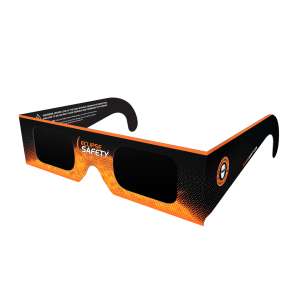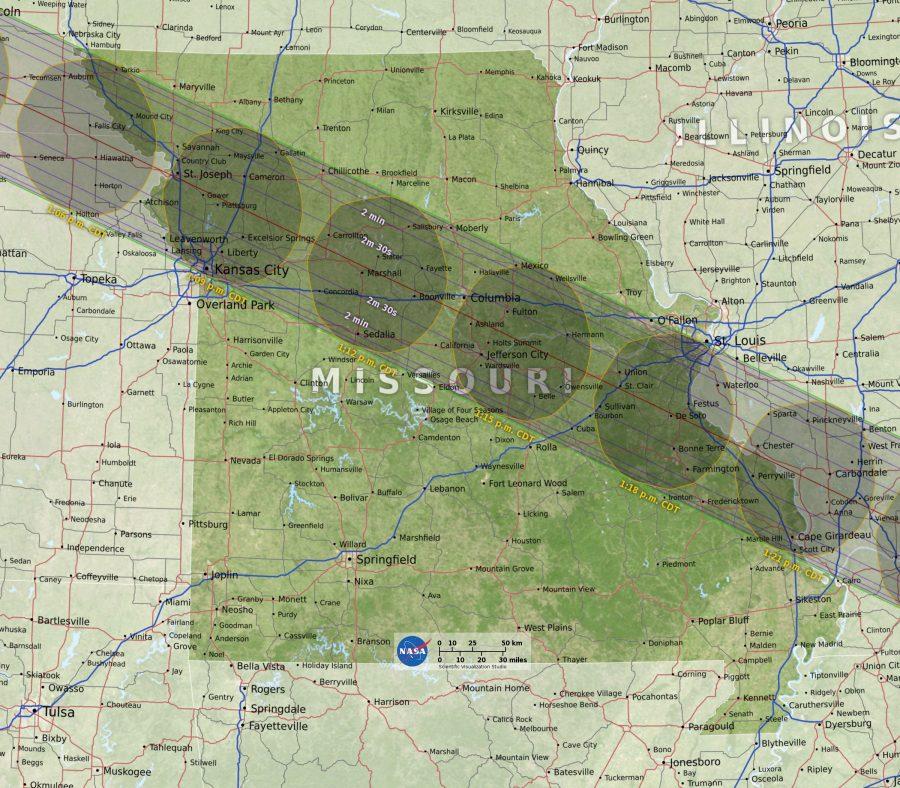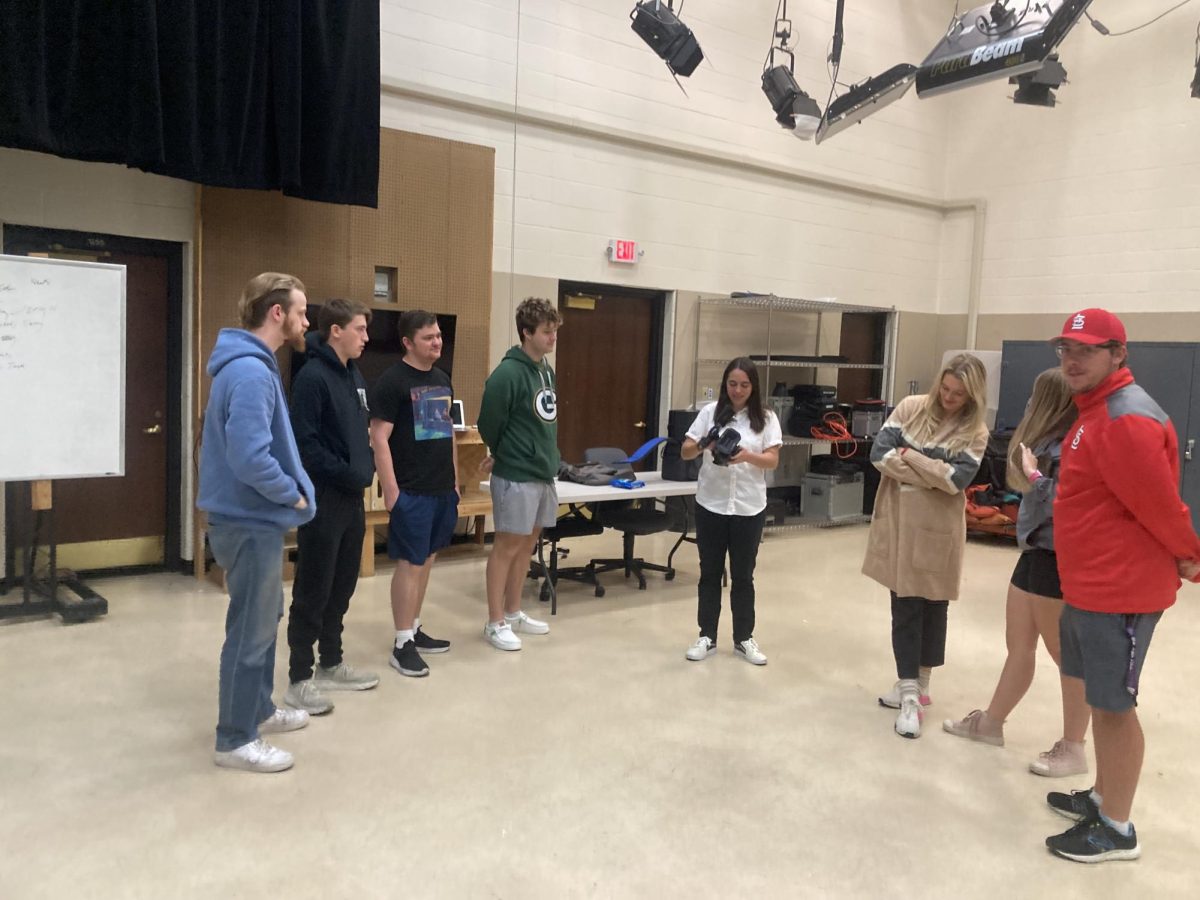BY MICHELLE SPROAT|VIDEO CONTENT MANAGER AND LINDSEY FIALA|ONLINE EDITOR
For the first time in nearly 150 years, Missouri residents will be exposed to a full solar eclipse. But you probably already knew that — unless you live under a rock.
According to the Missouri State Parks website, the last time Missourians saw an eclipse was on Aug. 7, 1869.
The eclipse has made headlines across the nation, but not many people understand what a solar eclipse is. According to NASA. a solar eclipse occurs when the moon moves between the sun and Earth, blocking the sunlight and casting a shadow onto Earth.
People from around the region will be traveling to Missouri for this historic event since it is in a path that will experience a total, not partial, eclipse. The website, eclipse2017.org, states that more people will see the eclipse in Missouri by default than any other point along the path. NASA’s website also indicates that St. Louis is one of the nation’s major cities to be in the total eclipse path.
Below is a list of travel and safety information as well as local events to attend during the historical event.
Travel
The Missouri Department of Transportation estimates that 1.2 million people will be visiting the state for the eclipse.
St. Charles County Parks Department and the Astronomical Society of Eastern Missouri are hosting three total solar eclipse events at Klondike Park in Augusta, Broemmelsiek Park in Defiance and Quail Ridge Park in Wentzville. All three of the parks were at capacity as of July 10 with 1,000 registered guests.
Andrew Gates, a spokesperson for the Missouri Department of Transportation, has some advice to maneuver through the masses.
“Leave early, get there early, stay in place for the eclipse and then plan on hanging out for a little bit after everything is done,” said Gates. “Roadways are probably going to get congested; it’s going to be like trying to leave downtown after a Cardinals game, except all across the state.”
MoDOT employees will be monitoring traffic around the region to efficiently send emergency response teams to incidents on the interstates.
While on the road, Gates recommends not looking at the eclipse.
“Don’t try to watch the eclipse while you are driving,” said Gates. “Trying to drive with those glasses on is really not a good idea, in fact, it’s pretty stupid to drive with those glasses on.”
Parking on the shoulder of the highway is hazardous and illegal and can result in towing at the owner’s expense. Travelers can view MoDOT’s statewide traffic maps here.
Safety
According to NASA’s website, optometrists recommend not looking directly at the eclipse unless you are wearing solar protection glasses. Looking at the eclipse without these kinds of glasses could lead to temporary or permanent eye damage.
“Think of a magnifying glass and trying to burn paper,” said Dr. Michael E. Weigle, an optometrist at The Optical Shop in St. Charles. “The eye focuses light to a point right in your central vision. If you’re staring at it, you focus the UV radiation right on the retina, and you can leave a burn.”


Eclipse Glasses
Getting a pair of eclipse glasses before the event on Monday may be difficult. Target, Walmart, Lowes and Schnucks in the St. Charles area are all out of stock, and store representatives said they are not getting any more shipments before the eclipse.
If you are unable to purchase a pair of glasses and still want to see the eclipse, you can make your own. Cass Runyon, a NASA funded professor at College of Charleston, shows you how to build your own solar eclipse glasses here.
NASA’s Eyes
NASA’s Eyes is an interactive, 3D simulation which allows you to view the eclipse from anywhere from the comfort of your computer, tablet or smartphone.
Once the app is downloaded, click the “Launch” button and then the “Explore” button, which is located at the bottom of the screen. Select a location by clicking on the Earth, choosing from one of five preset locations, or creating a custom location. From there you will be able to watch the eclipse from your selected area from beginning to end.
Click here to download the app.
Local Events
If you have the proper safety glasses and are looking for a place to see the eclipse, check out our list of events below.
- Great American Total Solar Eclipse at Jefferson Barracks Park in St. Louis. Gates open for parking at 9 a.m.
- Celebrate the 2017 Total Eclipse at Dr. Edmund A. Babler Memorial State Park in Wildwood. Starts at 10 a.m. at the River Hills Visitor Center
- Solar Eclipse Viewing with the “Moon” –Butterfly & Moon, 814 South Main St. in St. Charles. Starts at 11:30 a.m. Bring lawn chairs to sit and view the eclipse. Viewing glasses will be on sale. Moon pies and other refreshments will be available.
- “Ring of Fire” viewing party at Meramec State Park, Sullivan, Missouri. From 10 a.m. to 3 p.m. Viewing glasses will be available to purchase for $1. Bring blankets, chairs and snacks. Interpreters will be on hand to assist visitors and answer questions.
- Solar Eclipse Viewing at Mastodon State Historic Park in Imperial. There will be stations where you can learn about the way eclipses were interpreted throughout history by different cultures, where you can make your own pinhole viewer and learn about safety for viewing solar events and an activity where you may try your hand at lining up a model sun, moon and Earth to understand how an eclipse actually works. Activities will run until 1 p.m., followed by a chance to view totality from 1:17 p.m. – 1:19 p.m.
- Total Eclipse of the Park at Robertsville State Park, Robertsville, Missouri. Learn about astronomy during the daytime, such the sun and moon, seasons and a total solar eclipse. Interpretive stations will be set up in the day-use area for visitors to get a hands-on learning experience between 10:30 a.m. and 1 p.m.
News Editor Kyle Rainey contributed to this article.








